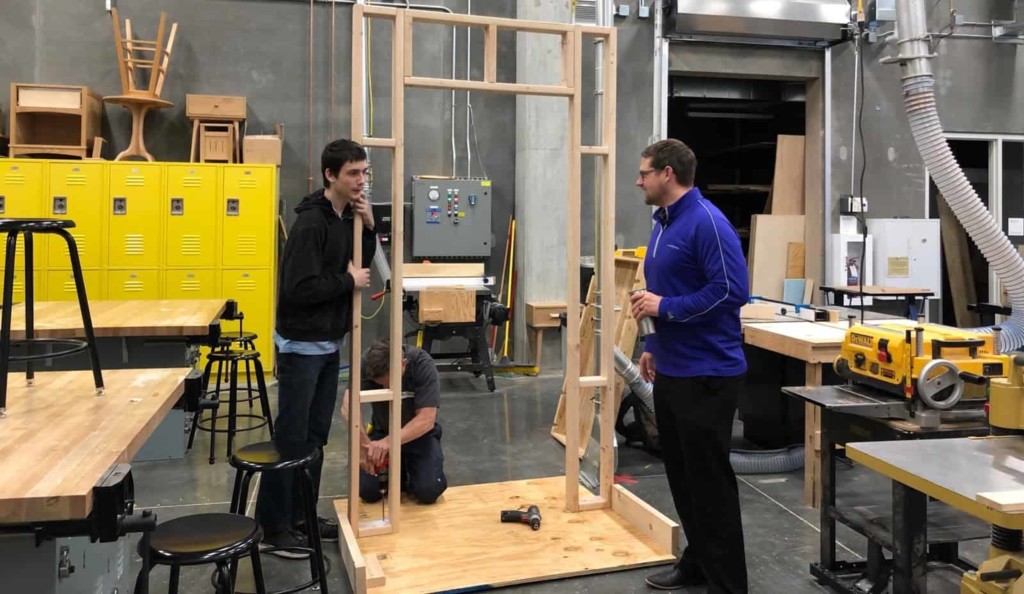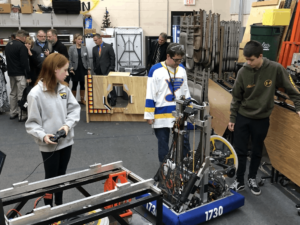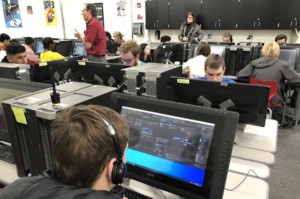New Changemaking Strategy Energizes Real World Learning in Kansas City

This has been a lousy year for high school students and disastrous for many of them. It has been a year stripped of fun and engaging activities, while navigating disassociated courses online, attempting video conferencing, competing for spotty Wi-Fi with parents and siblings in a house or apartment that felt smaller than usual.
The experience has been somewhat better for many youths in metro Kansas City as a result of the Real World Learning initiative, the largest and most important effort in America to make high school experiences more valuable.
Of the 100 high schools in the six-county region (spanning both Missouri and Kansas), two cohorts of about 70 high schools in 31 districts and charter schools have received planning grants. The goal is that before the end of the decade, every student will graduate with a diploma that prepares them for future work and learning, having accumulated one or more experiences valued by employers and higher education.
The Real World Learning Initiative is organized around regional agreements that value community-connected projects and internships, entrepreneurial experiences, college credit, and industry-recognized credentials. Supported by the Ewing Marion Kauffman Foundation, it is an efficient framework for mobilizing regional high school transformation.
From the beginning, local superintendents were involved in the design of the initiative – three turned into seven within a month, while the rest was organic growth based on compelling goals and trusted relationships. Within two years, the conversation expanded to 400 community stakeholders including business, civic, and faith leaders, parents, students, and educators.
A regional portrait of a graduate emerged through this conversation, but rather than settling for agreement on priority skills, Donna McDaniel, Educator in Residence at Kauffman, pushed for consensus on identifying valuable experiences students could receive, which came to be known as “Market Value Assets.” “We chose experiences, MVAs, versus skills, to focus on, due to the fact that you can ‘see’ and count them more consistently than the skills” McDaniel said.
The insight to focus community agreements on real-world experiences proved to be a key lever. McDaniel knew that educators would be quick to say, “We already teach communication, collaboration, and problem-solving.” And, while true, important skills may have been taught in isolation with little application outside the classroom. Prioritizing student experiences made rollout plans more specific and rallied the support of community partners who knew where and how to help.
Participating school districts received starting grants of about $75,000 to support planning and mobilization. Many districts used the funds to hire business partnership coordinators to expand internship and client-connected project opportunities. Planning grants also allowed design teams across the region to visit some of the best real-world learning schools in the country (physically in 2019 and then virtually in 2020).
The initiative has achieved strong early mobilization as a result of regional support for timely, compelling goals, a strong equity focus, and a flexible framework that allows schools to adopt strategies in their own way. McDaniel calls it a “loose/tight change theory: tight on results of 100% students graduating with one or more regionally defined MVA, and loose in appreciating the districts’ ownership of the how – what strategies for achieving 100% of students.”
While the equity-focused Real World Learning Initiative was just ramping up when the pandemic hit, students from dozens of Kansas City area high schools engaged in internships, client projects, and entrepreneurial experiences (many of them virtual), and gained college credit and industry credentials. Kansas City area districts also coordinated remote and hybrid learning strategies to boost reliability and quality.
Plans are underway to transform high school experiences for all students in the region. Schools have launched new career academies with built-in internships and client projects, embedded engaging experiences in required courses, and expanded access to college credit courses and entrepreneurial experiences.
How schools incorporated Real World Learning
We can look to a number of area schools for examples of Real World Learning programs well underway. At North Kansas City Schools, Dr. Chad Sutton, Assistant Superintendent of Academic Services and School Accountability worked with his four high school principals to develop a system-wide approach. They collaborated with ConnectED to develop career pathways that embed internships, industry credentials, and/or college credit courses. Other examples abound:
- Liberty High and Liberty North both created thematic project-based micro-schools.
- On the south side of the metro area, Belton High worked with Ford Next Generation Learning on a thoughtful phased implementation of career academies.
- Nearby Raymore Peculiar High School embedded a community-connected project in 12th grade English and created a project-based micro-school inspired by Iowa BIG.
- Center School District partnered with local universities to create innovative ways to triple the amount of college credit earned.
- Kansas City Public Schools allowed schools to respond. Schools like East High were able to enhance the four career academies already in place.
Most districts hired a business liaison to identify internships and client projects and supports for entrepreneurial experiences. Many districts expanded work experiences inside the district. In many cases, community partners and national programs like FFA have been critical to expanding opportunities.
Hybrid approach with network effects
While most grants are given to support previously defined solutions, pull mechanisms and prizes can create incentives for new solutions to achieving a defined goal. Pull mechanisms can put a lot of resources in motion, and solve a problem more quickly and less expensively than traditional approaches. Prizes, on the other hand, typically result in winners taking much of the benefit.
The Real World Learning initiative is a hybrid framework – it has a compelling set of well-defined goals that are specific enough to enlist business and civic support. Because they focus on experiences – internships, client projects, and entrepreneurial experiences – partners knew how and where they could support.
Kansas City metro school districts viewed the Real World Learning goals as timely and important and quickly adopted them into their strategies. The high-level framework was compelling but flexible enough for districts to incorporate Real World Learning experiences in their own way and time.
The initiative avoids the winner-takes-most outcome of prizes by supporting success for all participants through a highly collaborative network of support, including planning grants, technical assistance, professional learning experiences, and biweekly leadership convenings.
Taking the time upfront to build regional agreements around the compelling framework resulted in outsized mobilization and is making the Real World Learning super-efficient from a philanthropic perspective.
The initiative benefits from network effects – the benefit of participation for all stakeholders grows with scale. As more students participate, the level of preparedness benefits regional employers. As more employers and postsecondary institutions recognize the program, the more experiences they offer to students.
The initiative has also been highly collaborative. We’ve never seen districts work together so productively – especially across state lines. The initiative built on strong relationships developed by the regional support organization PrepKC and many other intermediaries. Support from community stakeholders and business partners has been essential to the success of the initiative. The trust, respect, and flexibility shown by Kauffman staff and respected former superintendents enlisted to provide technical assistance have also been instrumental in maintaining the high level of collaboration even in crisis conditions.
The five key elements of the Real World Learning Initiative could be used in other regions. In fact, these five elements could be used more broadly in human development from early learning to adult education:
- Community agreements on valuable experiences: goal definitions specific enough to drive quality in a framework flexible for schools to adopt in their own way.
- Planning grants that support priority mobilization efforts.
- Professional learning experiences that support quality implementation.
- Technical assistance that combines local and national expertise; a leadership network that promotes peer learning and cooperation with the flexibility to provide timely support.
- Data infrastructure including support for relevant applications and support for outcome evaluation.
While it’s been four years in development, the Real World Learning Initiative is just beginning to benefit high school graduates and the greater Kansas City region, but the infrastructure and momentum developed to suggest that high school will never be the same and, as a result, neither will the economy.
For more, see:
- Early Lessons From The Real World Learning Initiative
- Donna McDaniel on Real-World Learning
- Kansas City High Schools Add Real-World Learning
Stay in-the-know with innovations in learning by signing up for the weekly Smart Update. This post includes mentions of a Getting Smart partner. For a full list of partners, affiliate organizations and all other disclosures, please see our Partner page.




0 Comments
Leave a Comment
Your email address will not be published. All fields are required.